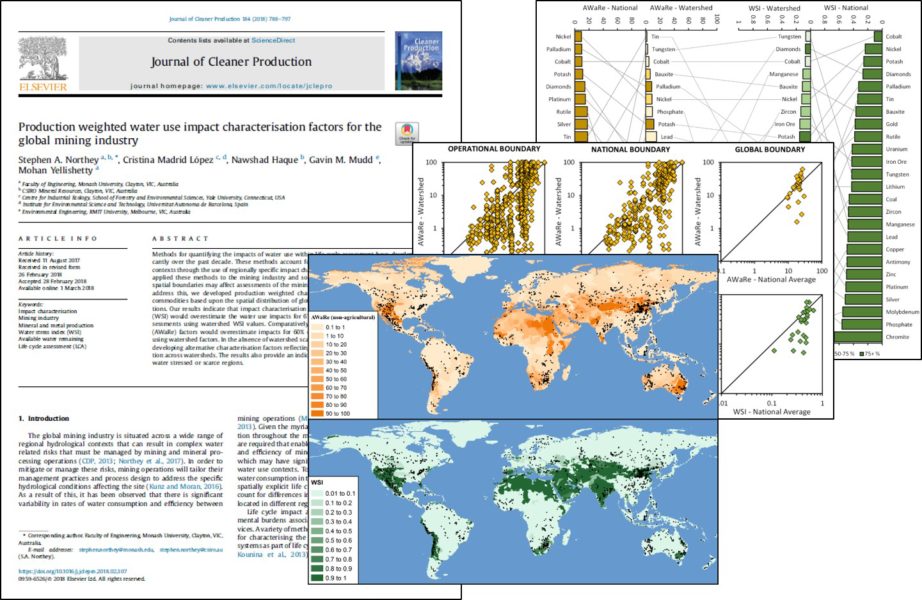Abstract
Methods for quantifying the impacts of water use within life cycle assessment have developed significantly over the past decade. These methods account for local differences in hydrology and water use contexts through the use of regionally specific impact characterisation factors. However, few studies have applied these methods to the mining industry and so there is limited understanding regarding how spatial boundaries may affect assessments of the mining industry’s consumptive water use impacts. To address this, we developed production weighted characterisation factors for 25 mineral and metal commodities based upon the spatial distribution of global mine production across watersheds and nations. Our results indicate that impact characterisation using the national average ‘Water Stress Index’ (WSI) would overestimate the water use impacts for 67% of mining operations when compared to assessments using watershed WSI values. Comparatively, national average ‘Available Water Remaining’ (AWaRe) factors would overestimate impacts for 60% of mining operations compared to assessments using watershed factors. In the absence of watershed scale inventory data, assessments may benefit from developing alternative characterisation factors reflecting the spatial distribution of commodity production across watersheds. The results also provide an indication of the commodities being mined in highly water stressed or scarce regions.
Mined Commodities Included in the Analysis
Antimony, Bauxite, Chromite, Coal, Cobalt, Copper, Diamonds, Gold, Iron Ore, Lead, Lithium, Manganese, Molybdenum, Nickel, Palladium, Phosphate, Platinum, Potash, Rutile, Silver, Tin, Tungsten, Uranium, Zinc and Zircon.
